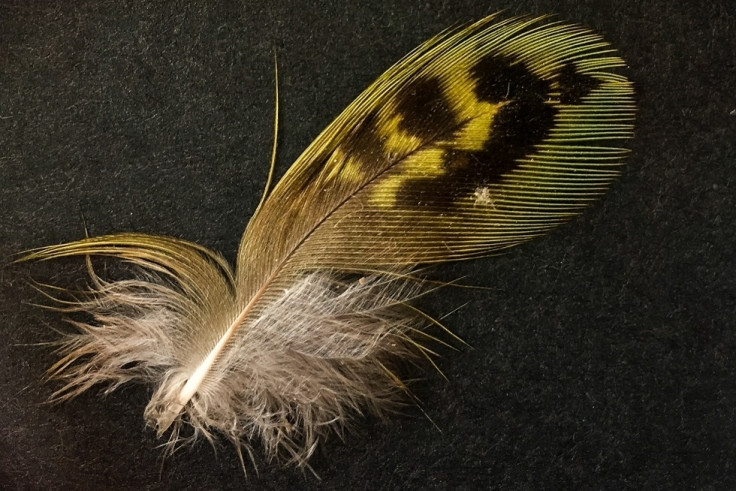Ecologists uncover evidence of legendary 'night parrot', one the world's rarest birds
Until 2013, the bird had not been seen alive by a single human for more than 100 years.

Ecologists from the Australian Wildlife Conservancy have discovered the first proof in more than a century that the mysterious 'night parrot' still lives in the south of the country.
John Young and Keith Bellchambers found a feather of the elusive bird – considered to be one of the rarest in the world – in a zebra finch's nest north of Kati Thanda–Lake Eyre, a remote lake in the state of South Australia.
The feather has been confirmed independently by an ornithologist at the Western Australian Museum to be that of a night parrot.
For more than 100 years the species was thought to be extinct. However, Young captured an image of one in the north-eastern state of Queensland four years ago, after reportedly spending nearly two decades searching for it. Since then it has been sighted in Western Australia and now, with the discovery of the feather, the suggestion is that there is a population still living in the south.
Finding the bird required some meticulous detective work. The first clue that alerted the ecologists to its whereabouts was a puzzling shape captured by a camera trap last year in a remote location around Lake Eyre only accessible by helicopter.
Young and Bellchambers were aware that night parrots had been documented in 1883 in a similar habitat and so they set about planning a search mission.
First, they scouted an area of more than 200sqm from a helicopter, using knowledge from the 1883 records and Young's experiences in Queensland to identify a location for further investigation.
Once they settled on one, they decide to hone in on an eagle's nest that had piqued their interest, knowing that zebra finches like to nest underneath them and, crucially, that they also line their nests with feathers they have collected from various birds. However unlikely, they thought it might just be possible that the zebra finch could have collected a night parrot feather.
"Zebra Finches just love to build their nests in the base of a wedge-tailed eagle's nest, so we walked over to investigate," Young said.
"Finally, an unmistakable small green feather appeared within the fresh base lining of one of the nests. People show excitement in many different ways. Mine was to shake uncontrollably with numbing excitement and Keith's was sheer disbelief with his hands holding his head. An incredibly emotional time for both of us."
"In my eyes there was no doubt that this was the feather of a night parrot and the fact that the zebra finch's nest was fresh, it seemed feasible that it was collected within a few hundred metres in the past few weeks."
© Copyright IBTimes 2024. All rights reserved.






